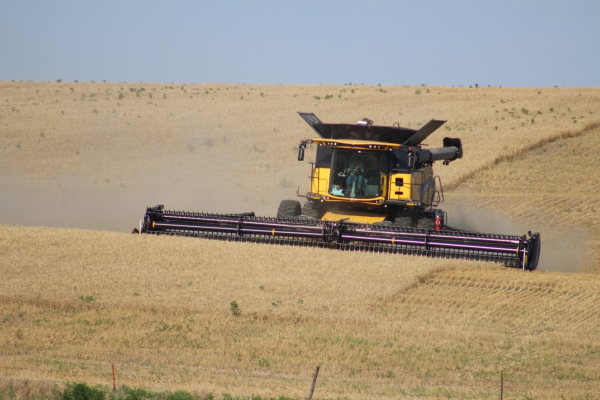Sens. Marshall, Bennet Introduce Bill to Improve Crop Insurance for Wheat Amid Drought

U.S. Senators Roger Marshall, M.D. and Michael Bennet (D-CO) introduced legislation that allows farmers to insure wheat enterprise units by fallow and continuous, while still offering a combined option for those who it would benefit. This is similar to the 2014 Farm Bill provision providing for separate enterprise units for irrigated and non-irrigated acreage of crops.
“The 1200 year drought in the Western United States has hit the Breadbasket of America, my wheat farmers in Kansas, especially hard, the extreme and exceptional drought in Kansas has the forecast for wheat yields looking very bleak,” said Senator Marshall. “While this bill can’t make it rain, it does provide flexibility to wheat farmers who need all the help they can to insure their wheat and their livelihood.”
“As Colorado’s farmers face uncertainty from forces beyond their control – from severe drought to a broken immigration system – many of them look to the Federal Crop Insurance Program to help manage risk and keep their family farms running. This new drought flexibility in the farm safety net will make it easier for farmers in Colorado and across the West to weather difficult times and pass their family farms to the next generation,” Senator Bennet said.
“On many farms across the breadbasket of America, wheat production falls into two main categories when looking at it from a management standpoint, which is fallow wheat and continuous wheat. Continuous wheat is planted in the fall after a crop such as soybeans or corn has been harvested, where as fallow wheat is planted earlier in the fall after the ground has sat idle for the winter and summer. While these two categories of wheat may be from the same bag of seed, they are treated like they are different crops. They both have different yield expectations and fertilizer needs as well as difficulties with weed pressure or moisture availability in the soil. Due to the different yield expectations, inputs are applied differently to keep the crop profitable so the farmer can pay his bills and stay in business. However in years when the weather doesn’t cooperate and crop insurance becomes a necessary tool, the two styles of wheat management are treated as the same and the yields are averaged together. This means the higher yielding fallow wheat with a higher cost of production isn’t as protected as it should be. We are already able to segregate wheat by irrigated and dry land production, the difference between fallow wheat and continuous is almost as vast as the difference in irrigated and non-irrigated. Making the change to be able to separate the two cropping styles would be a great benefit to wheat farmers by allowing them to protect their crops and operations effectively, giving them more confidence in their business decisions, and bringing an important tool (crop insurance) up to date with modern farming practices,” Kyler Millershaski, Kansas Association of Wheat Growers President, said.









